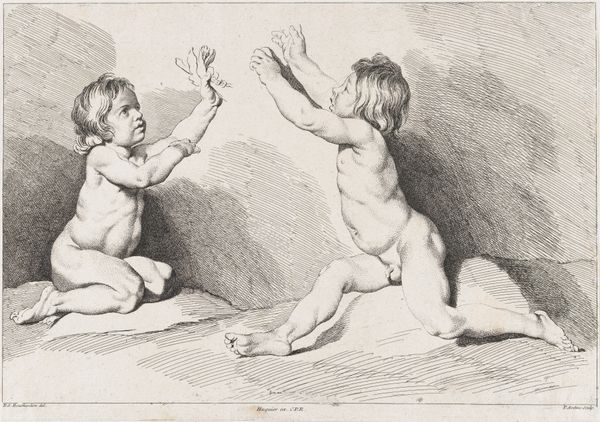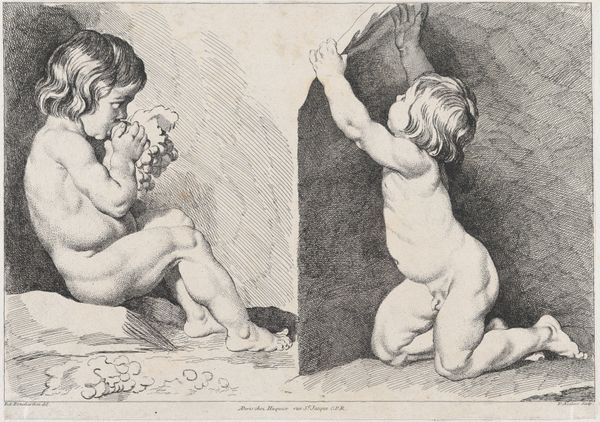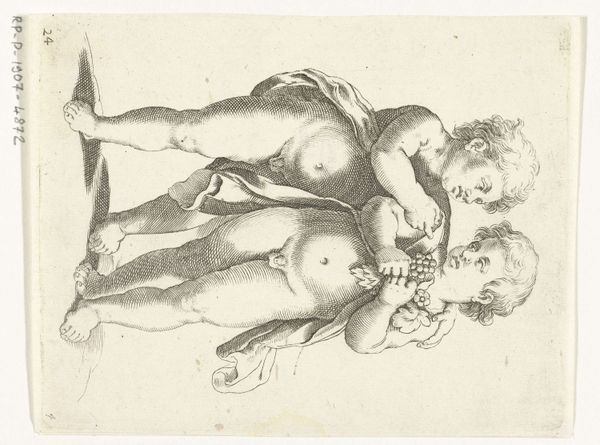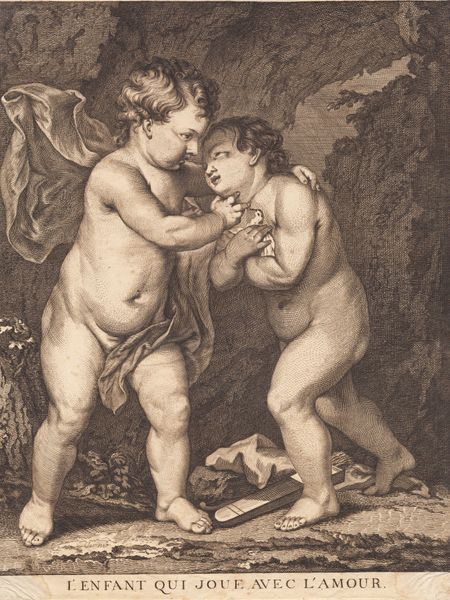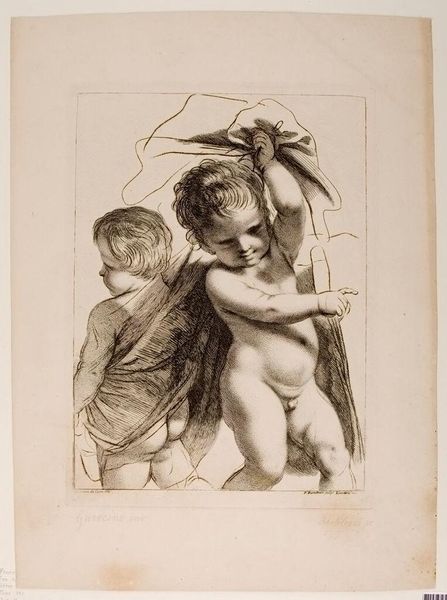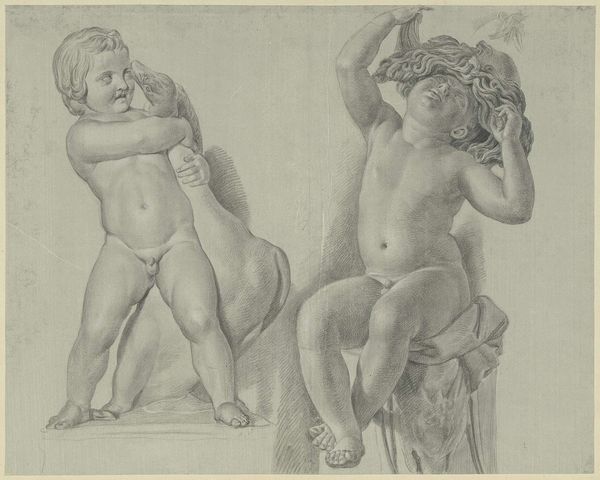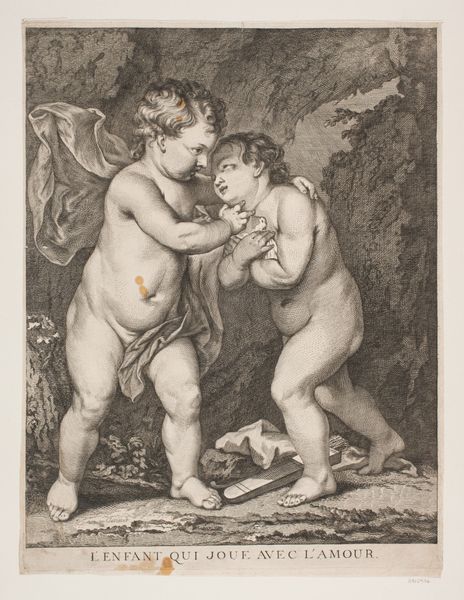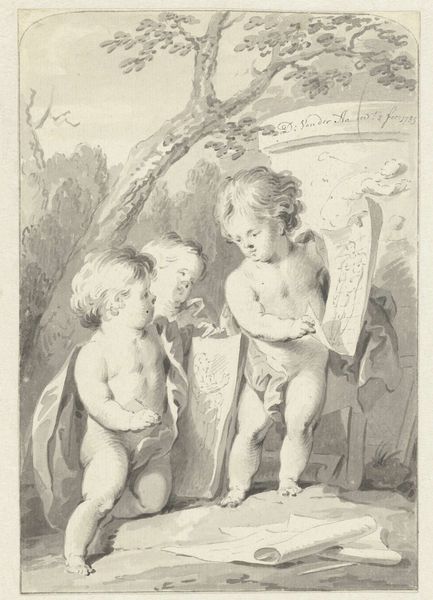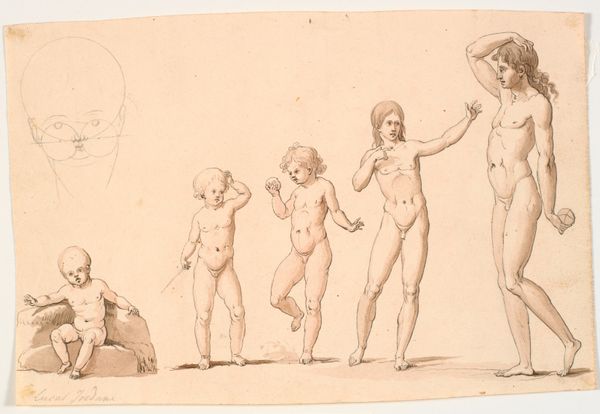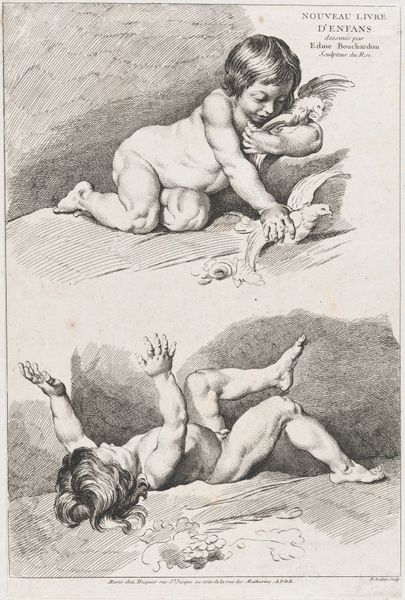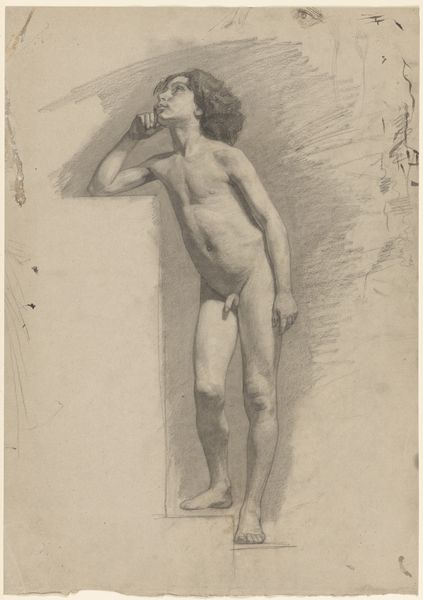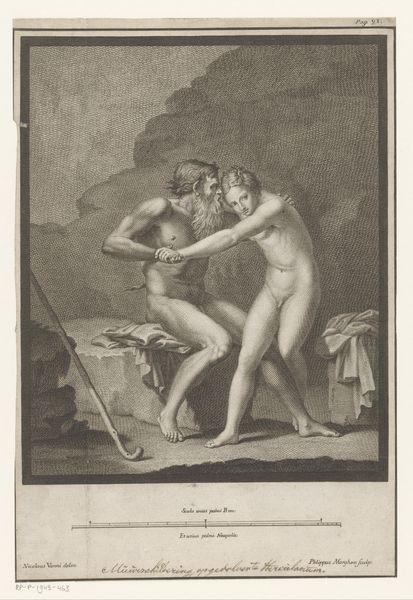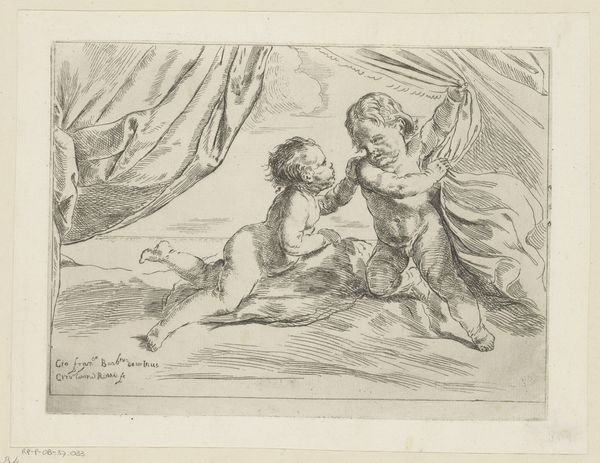
Two nude children standing; from New Book of Children 1720 - 1760
0:00
0:00
drawing, print
#
drawing
# print
#
child
#
genre-painting
#
nude
Dimensions: Sheet (trimmed): 10 3/8 × 14 7/8 in. (26.4 × 37.8 cm) Image: 10 3/16 × 14 11/16 in. (25.8 × 37.3 cm)
Copyright: Public Domain
Curator: Before us is an intriguing print, aptly named "Two nude children standing; from New Book of Children," dating from 1720 to 1760. Pierre Alexandre Aveline is credited as the artist. Art Historian: They certainly command your attention at first glance, don't they? Those chubby little figures, rendered in a way that feels... well, rather intense for a nursery scene. Are they fighting or playing, or something in between? Curator: The composition draws the eye immediately to the stark contrast between the meticulously rendered figures and the softly shaded background. Notice the careful balance, the dynamic poses mirrored yet distinct. Aveline employs a sophisticated use of line to define form and space, especially on the musculature. Art Historian: I find it interesting how these prints of children—intended to be innocuous or charming—often carry so much cultural weight. These nude children, caught mid-action, perhaps embody the societal ambivalence toward childhood innocence, simultaneously celebrated and sexualized. The scythe-like instruments certainly contribute to a peculiar reading. Curator: The tools indeed offer another layer. Their shapes contrast starkly with the rounded softness of the children’s bodies. Perhaps they symbolize a premature confrontation with labor or responsibility, a disruption of idyllic innocence? We are encouraged to delve beyond surface representation. Art Historian: Given the context of 18th-century printmaking, these images likely circulated among a specific elite audience. They represent not just childhood but also a certain idealized vision perpetuated and consumed by a privileged class. Curator: This detailed medium—printmaking—allows for a controlled manipulation of light and shadow that sculpts the bodies, giving them volume and weight. Art Historian: It’s intriguing to ponder how the public's view of this genre might shift across the ages. Today, it elicits a kind of discomfort that might say more about contemporary values than Aveline's initial intent. The setting itself remains curiously vague. Curator: True, the lack of environmental specificity redirects focus onto the figures themselves—onto line, form, and the interaction of tonal values—thereby enforcing the emphasis on structural elements. Art Historian: I leave with lingering questions about the market and mindset that brought this unique piece into existence, reminding us of how images evolve and morph according to diverse perspectives. Curator: Yes, from my side, analyzing the balance and careful articulation allows us to view artwork via its language of form and shape. A most satisfying exercise!
Comments
No comments
Be the first to comment and join the conversation on the ultimate creative platform.
